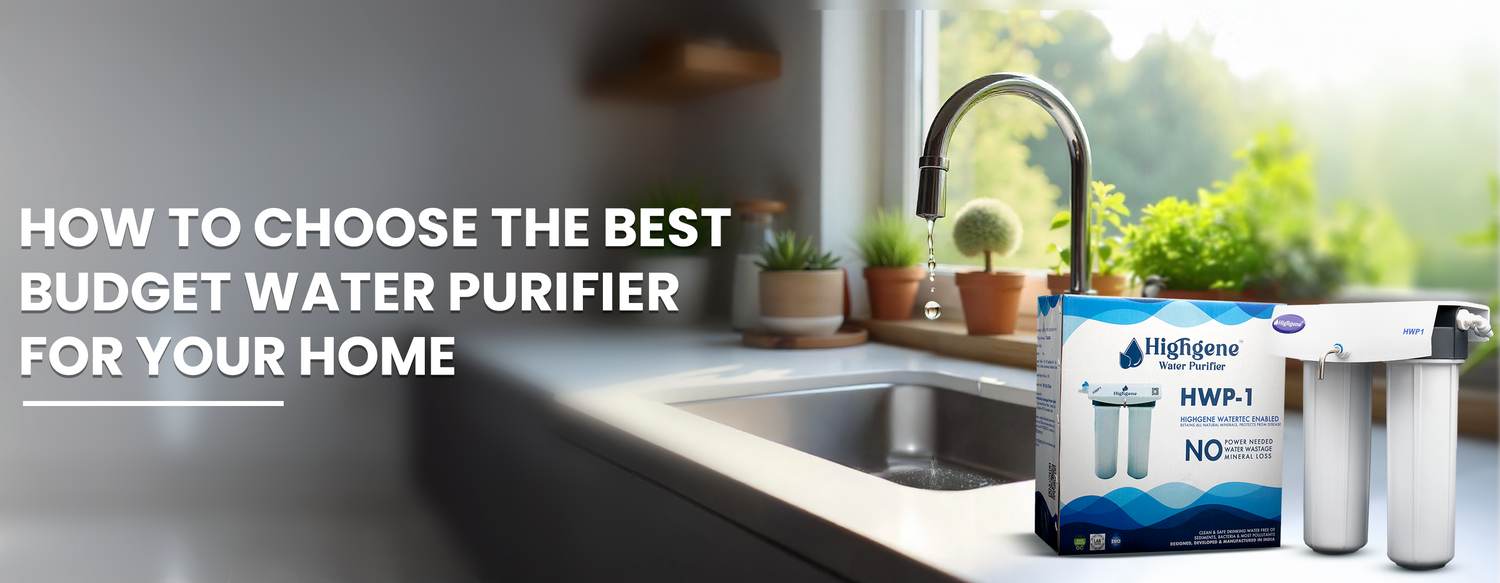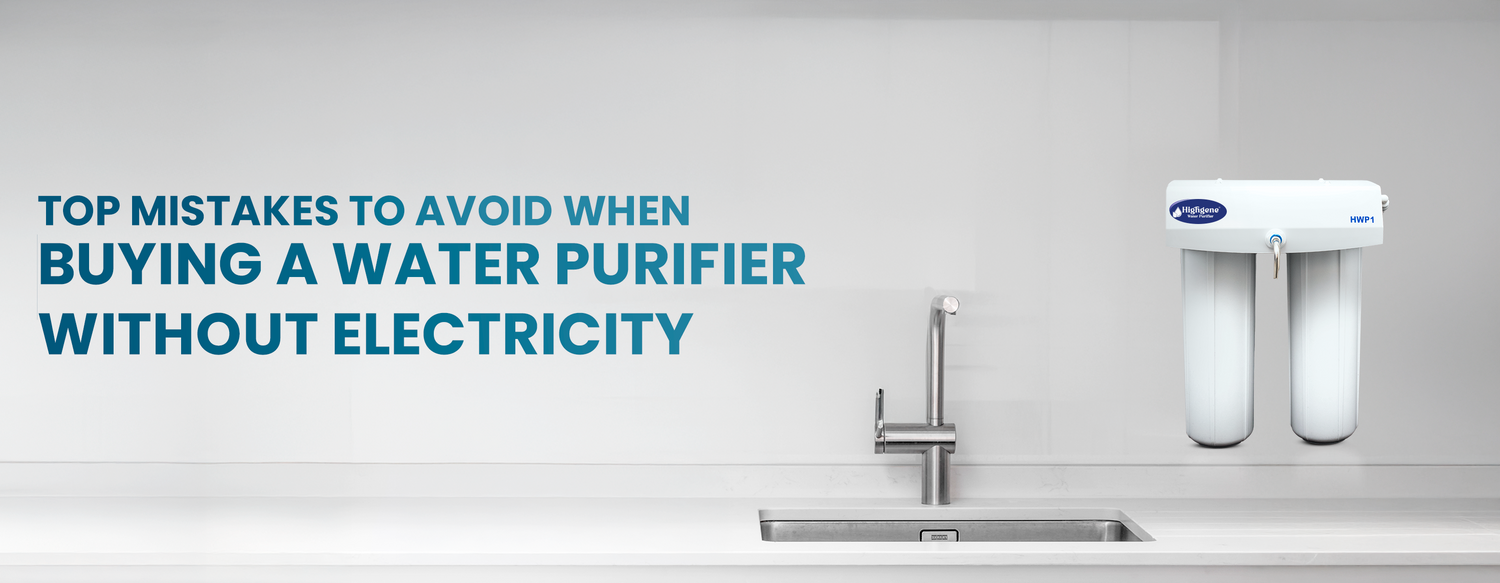"Clear, safe drinking water is essential for a healthy lifestyle and a healthy mind" - this awareness is gradually growing among the general public who are now prioritizing their health by investing in quality water purification systems. Whether you live in a resource-rich area where purifiers run on electricity, or in regions where power outages necessitate a non electric water purifier, you will eventually need to replace the cartridge. With the overwhelming variety of water filter cartridges available in the market, choosing the right one can be a Herculean task in itself. This blog will guide you through navigating the world of water filter cartridges effectively.
Types of Water Filter Cartridges Available in the Market
1. Polypropylene Filters
Polypropylene filters come in three varieties: Spun, Wound, and Pleated. Among these, pleated and Wound filters trap suspended solids to remove contaminants. Their outer surface has larger pore sizes which gradually decrease toward the center. This design traps larger contaminants first, followed by smaller particles - a process known as depth filtration, which is ideal for high turbidity and high flow rates. Spun filters, on the other hand, trap contaminants only on the surface and are typically preferred in situations with similar-sized contaminants and lower water flow rates. Preferred secondary sediment filters to filter our residual sediments in filtered water. Have low dust holding capacity and high filtering efficiency.
PP filters can filter out sand, silt, and dust. If the pore size is sufficiently small, they can even filter bacteria and viruses. Most importantly, these filters are chemical-resistant, which extends their lifespan. These filters are perfect for any non electric water purifier for home setup due to their reliability and effectiveness without requiring power.
2. Activated Carbon Filters
These filters are used to remove dissolved chemical impurities such as chlorine, heavy metals, and both organic and inorganic impurities from water. They are the most effective method for eliminating bad taste and odour from water. This non electric water filter technology is often combined with other filtration methods, making it versatile for various purification needs.
Activated carbon works through a process called adsorption, where contaminants adhere to the carbon's surface. The extensive surface area of activated carbon makes it exceptionally effective at capturing a wide range of impurities, ensuring your drinking water is not only safe but also pleasant to consume.
3. Ceramic Filters
Made from affordable porous ceramic material, these filter cartridges can achieve very fine pore sizes. For this reason, they prove to be another effective method for removing bacteria and protozoa from water. However, they can sometimes restrict water flow, and their maintenance and cleaning require careful attention to ensure they don't break under pressure.
Ceramic filters are particularly popular in regions with unreliable electricity because they function efficiently in a non electric water purifier system. Their durability and effectiveness make them suitable for long-term use, provided they are maintained properly.
How to Identify the Right Filter for Your Water Purifier
1. Locate Manufacturer Brand & Model
The best approach is to first identify your purifier's brand and model number. This information is usually written on the chamber that holds the filter cartridge.
2. Consult with the Manufacturer
Once you have the model number, connect with the manufacturer through authorized channels such as customer support, contact information, or their website to obtain more specific information about your purifier, its filter cartridge, and replacement details.
Important Considerations When Identifying Water Filter Cartridges
1. Water Consumption
It's essential to have an idea of your household's water consumption so that you can purchase a filter cartridge with the right dimensions and capacity according to your requirements. Incorrect capacity or size can lead to poor filtration performance.
2. Filtration Efficiency
Pay attention to the micron rating of the filter cartridge. This determines how effective the filter will be in removing contaminants. A pore size of up to 5 microns removes visible particles, while filters with 1 micron or less are used to remove fine contaminants and microorganisms. Generally, a higher micron rating (more pores, smaller size) is preferred for better filtration.
3. Flow Rate
The flow rate capacity of the cartridge should match the flow rate capacity of your purifier. A filter with a lower capacity reduces water flow and decreases efficiency. So, a cartridge with a flow rate in sync with the flow rate of the purifier should be installed to avoid issues.
4. Cartridge Lifespan & Maintenance
Ensure that the cartridge's lifespan is substantial to avoid increasing replacement or cleaning costs. Filter cartridges should be easy to remove, clean, and reinstall without much hassle. Frequent cartridge replacement can also damage the purifier.
5. Manufacturer Guidelines
Use only genuine cartridges recommended by the manufacturer. These are quality and performance-certified and ensure smooth operation of your purifier. Follow the installation and maintenance guidelines provided by the manufacturer. Regular inspection and maintenance are necessary. If you are not confident in your ability to properly clean or maintain filters, consider hiring a manufacturer-authorized professional.
The Highgene Advantage in Non-Electric Water Purification
The Highgene Water Purifier is a non electric water purifier for home. It features outstanding filtration performance with its sophisticated three-stage filtration system. The initial stage employs a sedimentation filter, which efficiently traps larger particles such as sand, silt, and suspended solids. During the second stage, a high-grade activated carbon with a Heavy metal removal media filter reduces chlorine, odours, heavy metals like Lead, chromium, cadmium, mercury, arsenic and toxic chemicals that impact health. The last stage a state-of-the-art UF (Ultrafiltration) membrane, which eliminates nanoscopic impurities like 99.999% of bacteria, viruses, while selectively retaining useful minerals your body requires. The exhaustive filtration strategy positions the Highgene as a top non electric water filter option for waters with TDS below 500.
Conclusion
Selecting the right filter cartridge for your water purifier is crucial for ensuring clear and safe drinking water. You can make a sensible decision by understanding the types of filters available and considering factors such as water consumption, filtration efficiency, flow rate, and maintenance requirements. Always follow the manufacturer's guidelines for optimal performance and longevity of your water purifier system.





